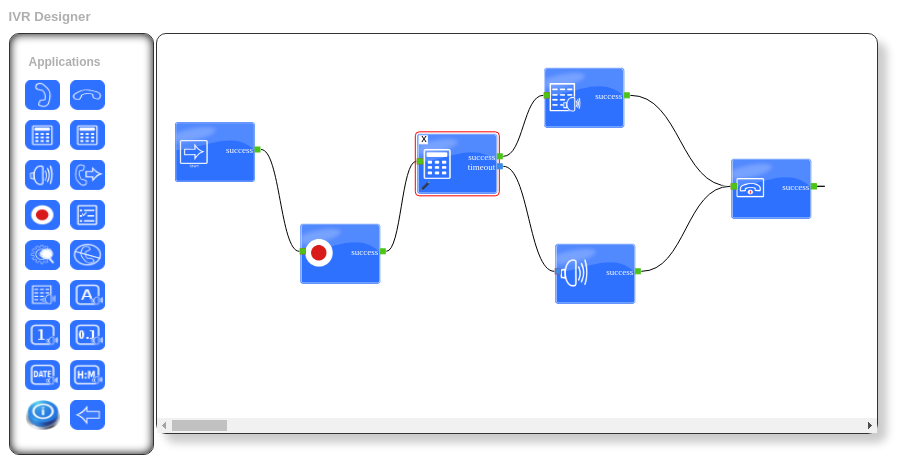In today’s fast-paced digital landscape, businesses are continually striving to deliver superior customer experiences, a task that requires managing customer interactions across various communication channels efficiently. As customers become increasingly connected and mobile, contact centers must evolve to meet expectations. The adoption of omnichannel communication paired with built-in CRM (Customer Relationship Management) has revolutionized how businesses engage with their audience, ensuring seamless interactions, improved response times, and a personalized touch across all touch points.
In this article, we will explore how integrating omnichannel communication in advanced contact center and a built-in CRM in advanced contact center software fosters seamless connectivity, boosts operational efficiency, and ultimately enhances customer satisfaction. Let’s delve into the key components, benefits, and strategies for leveraging these technologies in modern contact centers.
Understanding Omnichannel Communication in Contact Centers
Omnichannel communication refers to the ability of a contact center to manage and integrate multiple communication channels—such as phone, email, live chat, social media, SMS, and more—into a single, unified interface. It allows agents to seamlessly transition between these channels while maintaining the context of the conversation, ensuring a consistent and uninterrupted customer experience.
Key Features of Omnichannel Communication:
- Unified Customer Journey: Whether a customer starts a conversation on social media, follows up via email, or calls in, omnichannel systems allow agents to access the entire interaction history in real-time.
- Channel Flexibility: Customers can choose their preferred mode of communication, switching between channels without repeating information or encountering delays.
- Improved Response Times: With all communication channels integrated into one platform, agents can manage multiple conversations more effectively, cutting down response times.
- Cross-Channel Analytics: Comprehensive data from all channels provides businesses with deeper insights into customer behavior, allowing for better strategic decision-making.

The Role of Built-in CRM in Contact Center Software
A built-in CRM system integrated into contact center software allows businesses to manage customer information, track interactions, and create detailed profiles directly within the communication platform. This centralization of customer data streamlines workflows, reduces the need for agents to switch between applications, and enhances personalization.
Key Benefits of Built-in CRM:
- Consolidated Customer Data: All customer details—including previous interactions, purchase history, and preferences—are stored in a single location, accessible to agents at all times.
- Enhanced Personalization: With access to a customer’s complete profile, agents can provide tailored solutions and personalized recommendations, building stronger relationships.
- Streamlined Workflows: Agents can handle inquiries, update customer records, and manage tasks without toggling between separate systems, improving overall efficiency.
- Improved Collaboration: A built-in CRM allows different teams (sales, support, marketing) to collaborate seamlessly, as all customer information is shared across the organization.

The Power of Integration: Omnichannel Communication and Built-in CRM
The synergy between omnichannel communication and built-in CRM offers numerous advantages to contact centers, particularly in terms of providing a cohesive customer experience and boosting operational performance. By leveraging both, businesses can break down communication silos and offer customers a more responsive, personalized, and efficient service.
1. Seamless Customer Interaction Across Channels
With the integration of omnichannel communication, businesses can offer consistent experiences regardless of the channel a customer chooses. Built-in CRM complements this by ensuring that agents have access to detailed customer information, helping them provide personalized support.
For instance, if a customer contacts the support team via live chat and later follows up by phone, the agent will have full visibility of the previous chat interactions. This eliminates the need for the customer to repeat themselves and allows the agent to pick up where the conversation left off, enhancing customer satisfaction.
2. Unified Customer Profiles for a Personalized Experience
By integrating CRM into omnichannel systems, businesses create unified customer profiles that aggregate data from all touchpoints. This allows agents to provide a personalized experience for every interaction, no matter which channel the customer is using. The CRM can track customer preferences, previous inquiries, purchase history, and more, helping agents offer tailored solutions.
Additionally, automated systems can be set up to suggest relevant offers or solutions based on past interactions, improving the chances of resolving issues quickly and upselling products or services.
3. Boosting Agent Productivity
A significant challenge in traditional contact centers is the fragmented nature of data. Agents often spend a considerable amount of time switching between different platforms—whether it’s email, social media, or the CRM—to find relevant customer information.
With an integrated system, agents have everything they need in one place, reducing the time spent searching for data and allowing them to focus on providing quality service. This leads to faster response times, higher first-call resolution rates, and improved customer satisfaction.
4. Improved Analytics and Reporting
Omnichannel communication systems, coupled with a built-in CRM, provide businesses with a wealth of data about customer interactions across all channels. This data can be used to generate detailed reports on agent performance, customer satisfaction, and communication trends.
These insights are invaluable for decision-makers looking to improve processes, optimize agent workflows, and better understand customer behavior. Additionally, this data can be used to identify areas for improvement and opportunities for training, ensuring that agents continue to deliver high-quality service.
Enhancing the Customer Journey with Advanced Contact Center Features
To fully leverage the benefits of omnichannel communication and built-in CRM, advanced contact center software often incorporates several other features that enhance the customer journey. These features include:
1. IVR (Interactive Voice Response) Systems
IVR designer enable businesses to handle high call volumes more efficiently by automating the initial stages of customer interactions. By routing calls to the appropriate departments or agents based on customer inputs, IVR systems reduce wait times and ensure that customers are connected to the right person.
When integrated with CRM, IVR systems can personalize the experience by greeting customers by name, offering relevant options based on previous interactions, and directing VIP customers to priority queues.

2. AI-Powered Chatbots
AI-powered chatbots are increasingly becoming an integral part of omnichannel communication. These chatbots can handle simple inquiries, provide quick responses, and even assist with order placements. When combined with CRM data, chatbots can offer personalized responses, improving the customer experience even during off-hours.
In the event that a chatbot cannot resolve an issue, the conversation can be seamlessly transferred to a human agent, complete with all the context and data from the prior interaction.
3. Call Recording and Analytics
Call recording allows businesses to monitor agent performance and ensure quality standards are met. These recordings can be analyzed to identify areas for improvement, track customer sentiment, and ensure compliance with industry regulations.
When integrated with omnichannel systems and CRM, call analytics can provide deeper insights into customer behavior and communication patterns, helping businesses fine-tune their strategies.
Conclusion:
As customer expectations continue to evolve, businesses must adopt advanced technologies to stay competitive. By leveraging omnichannel communication and built-in CRM within contact center software, organizations can provide seamless, personalized experiences that foster customer loyalty and enhance operational efficiency.
The integration of these technologies ensures that businesses are equipped to handle the complexities of modern customer service, offering flexibility, scalability, and actionable insights. As a result, companies can meet the growing demands of their customers, delivering superior service across every channel while maintaining a cohesive and connected experience.
In the future, the combination of omnichannel communication and built-in CRM will only become more critical as businesses continue to prioritize customer-centric strategies. By adopting these advanced contact center solutions, businesses can ensure they remain agile, responsive, and successful in an ever-changing marketplace.
